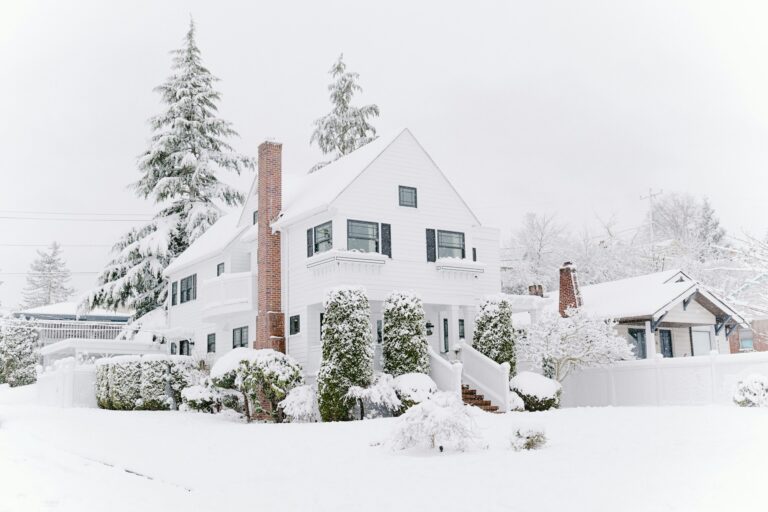Pipe freezing can cause significant damage to systems in harsh environments, leading to costly repairs and frustrating disruptions. When water inside pipes freezes, it expands, increasing pressure and often causing pipes to crack or burst.
If you’ve dealt with this issue before, you know it’s a problem no one wants to face, especially in challenging weather conditions.
This guide outlines effective strategies and solutions for pipe freeze prevention. You’ll learn why pipes freeze, risk areas to monitor, and how tools like heat trace cables and other cold weather protection products can provide lasting, efficient solutions.
Why Do Pipes Freeze?
Before exploring prevention techniques, it’s helpful to understand why pipes freeze in the first place. This occurs most commonly when temperatures drop below 32°F (0°C), turning the water inside into ice.
Harsh environments increase the risk due to prolonged exposure to freezing temperatures, wind chill, and a lack of consistent heating.
Certain scenarios elevate the likelihood of freezing, such as:
- Uninsulated or poorly insulated pipes exposed to the elements
- Areas with irregular water usage, leading to stagnant water in the pipes
- Sudden and extreme drops in temperature
Understanding where and why the problem occurs prepares you for the next step in addressing and avoiding potential damage.
Areas Most Vulnerable to Pipe Freezing
Not all pipes are at the same risk of freezing. Some are naturally more exposed or situated in locations prone to extreme cold. Take note of these high-risk areas when evaluating your system:
- Outdoor Pipes: Garden hoses, sprinkler systems, and pipes attached to exterior walls are susceptible to constant exposure to freezing temperatures.
- Basement and Attic Pipes: Poorly insulated pipes in basements, crawl spaces, and attics often face extreme cold if these areas lack adequate heating.
- Commercial or Industrial Areas: Facilities located in extremely cold regions frequently face the unique challenge of keeping massive industrial pipe systems operational.
Proven Solutions for Pipe Freeze Prevention
The good news? There are numerous strategies that businesses, facility managers, and homeowners can adopt to keep pipes from freezing—even in the harshest environments.
1. Insulate Your Pipes
Pipe insulation is one of the simplest and most effective methods of cold weather protection.
Wrapping pipes with foam or fiberglass insulation helps them retain heat and prevents freezing during temperature drops. This measure is especially useful for pipes in garages, crawl spaces, or exposed outdoor areas.
Expert Tip
Insulation by itself may not fully protect pipes during extreme cold snaps, but it provides excellent first-line defense when paired with other prevention methods like heat trace cables.
2. Invest in Heat Trace Cables
Heat trace cables are a game-changer for pipe freeze prevention, especially in industrial, commercial, and remote environments.
These cables use electric heating technology to maintain the desired pipe temperature, preventing freezing even in extremely cold conditions.
Why Self-Regulating Heat Trace Cables Work Best
Self regulating heat trace cables adjust their output based on ambient temperature. When the temperature drops, the cables generate more heat, and when it rises, they reduce output accordingly.
This feature ensures energy efficiency while offering reliable protection. Businesses in harsh climates highly benefit from this innovative yet cost-effective solution.
3. Maintain Water Flow
Pipes rarely freeze when water keeps flowing. Leaving a faucet dripping during cold nights can prevent stagnation, reducing the chance of freezing.
While this approach may vary in effectiveness depending on the situation, it’s an option many use to keep their systems functioning.
4. Seal Gaps and Cracks
Sealing cracks and gaps around exposed pipes helps block cold air from leaking into areas where vulnerable plumbing is present. Use caulking or expandable foam to seal these areas.
For industrial setups, metal shields or other heavy-duty sealing options may offer enhanced durability and shielding.
5. Monitor Pipe Temperatures
Installing temperature monitoring systems can give you advance notice of dangerously low temperatures near important pipes. An alert system integrated with heat trace cables ensures timely action in case of urgent need.
Why Pipe Protection is an Investment, Not an Expense
Preventing pipe freeze incidents may involve up-front costs, but the ROI (return on investment) is substantial. A single burst pipe repair can cost thousands of dollars, especially in commercial properties or industrial facilities.
Beyond monetary damage, pipe failures cause disruptions, downtime, and potential hazards involving nearby equipment or infrastructure.
Pairing tools like advanced heat trace cables with regular maintenance not only minimizes risks but also reduces long-term costs.
Facilities that incorporate technology-specific solutions such as self-regulating cables often see sharp efficiency gains compared to properties relying purely on conventional approaches like insulation or manual water flow.
Act Today to Safeguard Tomorrow
Pipe freeze prevention requires a few strategic steps that deliver significant peace of mind during winter’s harshest months.
By insulating, installing heat trace cables, and adopting organizational maintenance practices like regular checks, you can ensure your plumbing won’t freeze under pressure.
Looking to future-proof your system further? Explore trusted solutions like self-regulating heat trace cables for dependable and energy-efficient pipe freeze prevention. Acting ahead saves resources, time, and hassle down the road.


